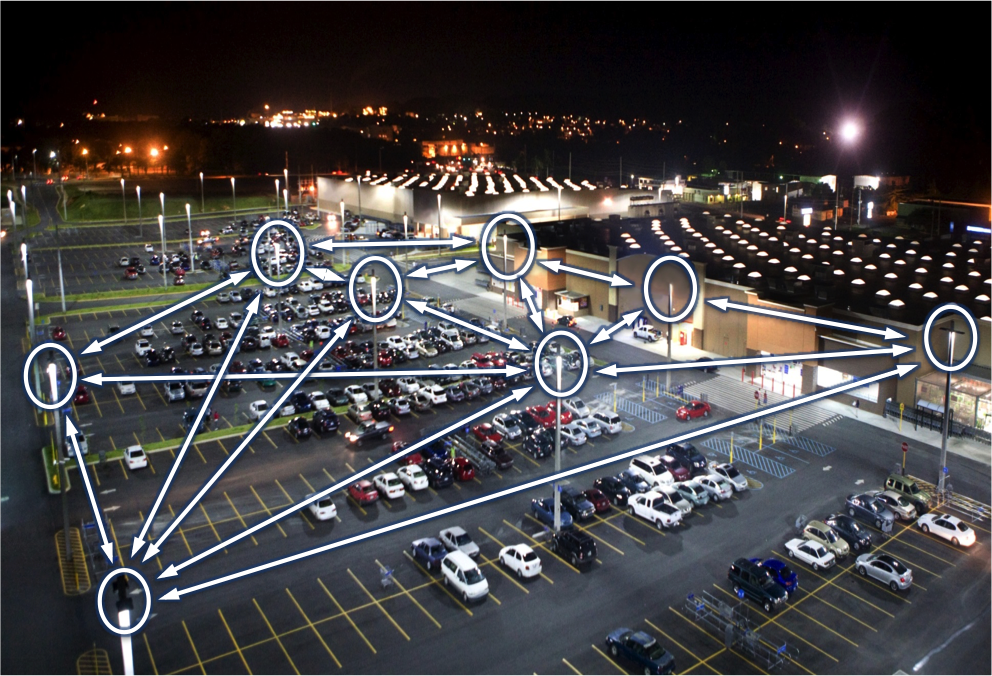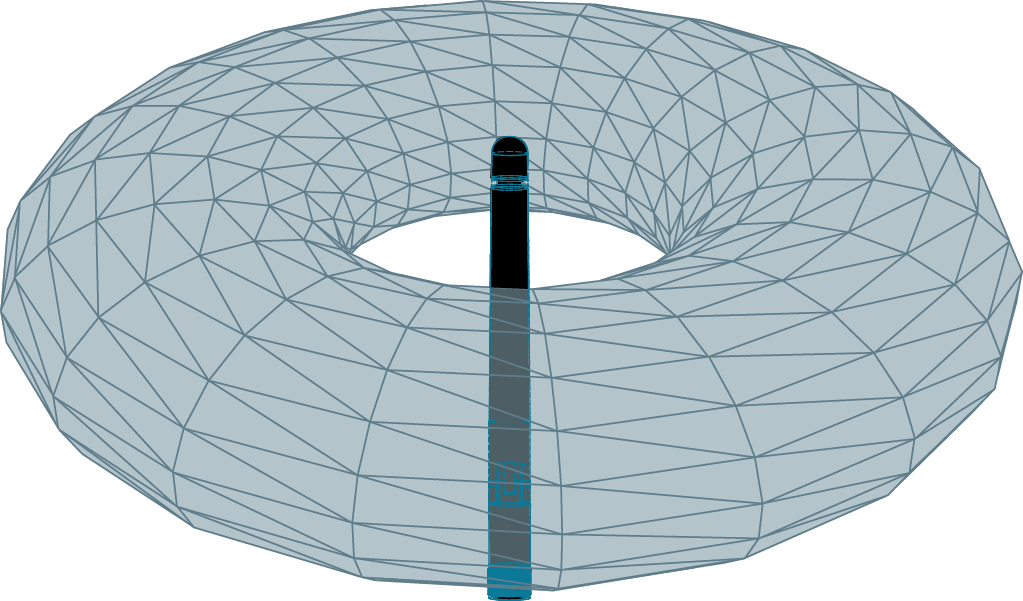Advanced RF Topics for Lighting Controllers
Advanced RF Topics for Lighting Controllers
While most SimplySnap installations go well the first time, issues do sometimes occur. When this happens, the result is typically related to poor RF signal strength caused by interference, or incorrect antenna orientation. In most cases these issues can be avoided by following the best practices that we’ve outlined below.
Best Practices
Antennas - Vertical Height and Horizontal Spacing

Ideal vertical height for a gateway or lighting controller installation is 6 feet or higher from the ground. Although the Horizontal transmission distance can be 1 mile LOS (line of sight), obstructions can reduce this distance. Users need to take obstacles such as buildings, metal, foliage, etc. into consideration. Since SimplySNAP utilizes a wireless mesh network, it is possible to have fixtures that are not in direct LOS. A typical parking lot application will usually have greater distance between fixtures, typically 40 to 100 feet between poles. This distance provides a very strong signal between the SNAP enabled fixtures. Indoor applications will have fixtures much closer together, but will have obstacles such as walls, metal structures, and concrete to contend with. A wireless controlled fixture should have an unobstructed LOS to at least two other wireless controlled fixtures. The SNAP mesh network allows the system to hop around obstacles like buildings, trees, metal obstructions, and concrete walls.
Antenna Types

The antennas used by SNAP wireless lighting controllers are Omni-directional antennas that provide a uniform, donut-shaped 360˚ radiation pattern. To visualize the radiation pattern, imagine a donut with the tip of the antenna in the center of the donut hole.
These antennas are referred to as “rubber duck” style antennas. The antenna has an RP-SMA male (Note the pin socket and barrel socket) connection that will connect to an RP-SMA female connection.
The most common antennas used in a SimplySNAP wireless lighting installation are pictured at right. Use only recommended antennas, as substitutions could compromise FCC certifications, signal strength and receive sensitivity.
RF Interference created by objects

Material composition can have a significant impact on the quality of the RF signal. Here are a few examples:
- Standard drywall does not present much of an issue to the 2.4Ghz wireless spectrum. However, things inside or attached to the drywall, such as copper pipe, electrical conduit, and circuit breaker panels, will partially block RF signal propagation.
- Hollow cement block walls will dampen the RF signal.
- Reinforced concrete walls typically contain rebar that will contribute to significant RF signal strength loss.
- Large Metal Structures such as metal cabinets, HVAC units, machinery, brew kettles, etc. may partially or completely block the RF signal.
Working with RF Interference
The SimplySNAP network is resilient due to a wireless mesh network. Each light controller will repeat all SimplySNAP messages allowing the message to wirelessly hop around obstacles. The mesh networking feature also extends the range of the network. Some potential issues are:
- broken antenna
- misaligned antenna – such as one tilted horizontally
- wrong type of antenna
- poor connection between cable and antenna
- pinched or broken cable
- bulkhead not properly installed – not enough jack extending through fixture to mate with antenna
- No power to the lighting controller
Always verify all cable, bulkhead, and antenna connections.
Remember, the more direct line-of-sight lines you have between SNAP Lighting Controllers and the Site Controller, the more robust and resilient your RF network will be.